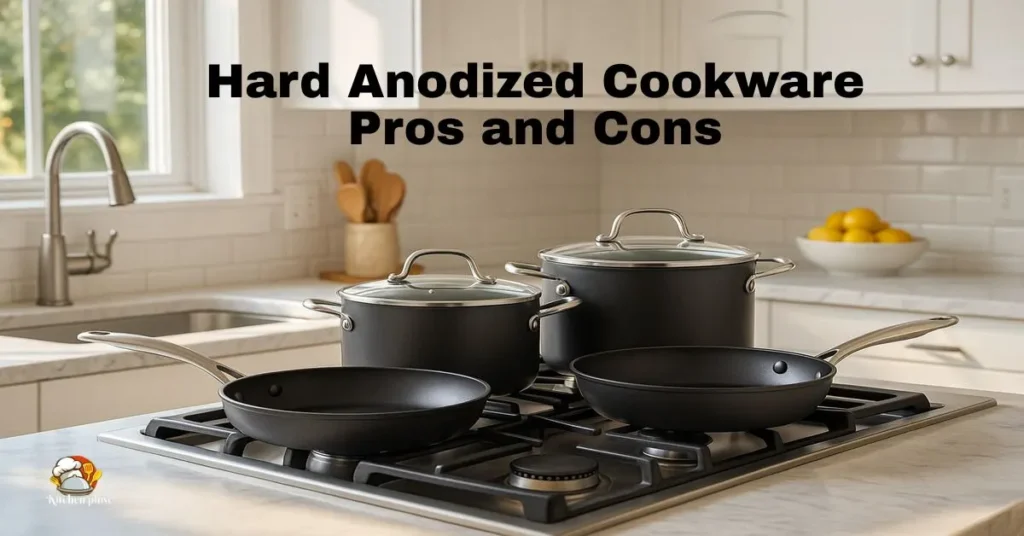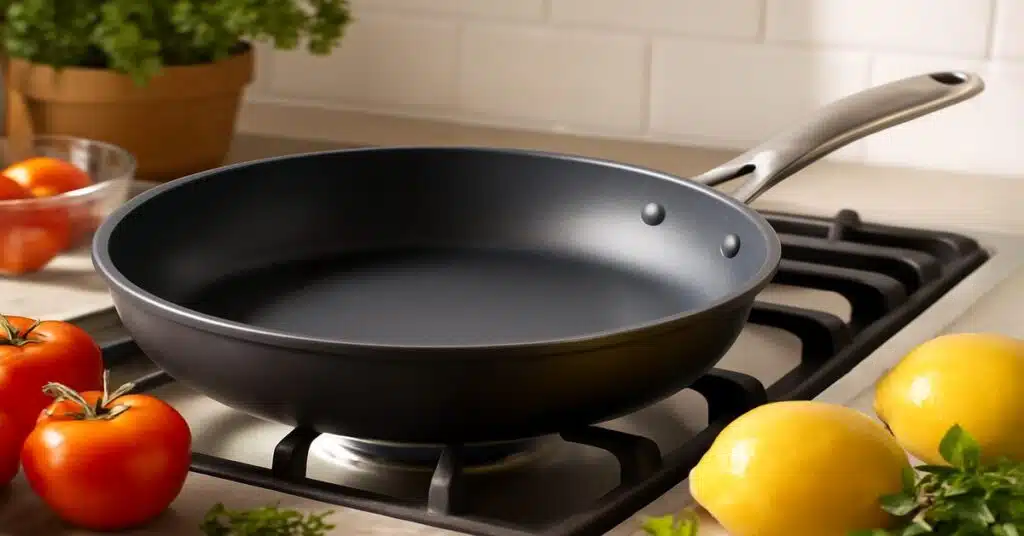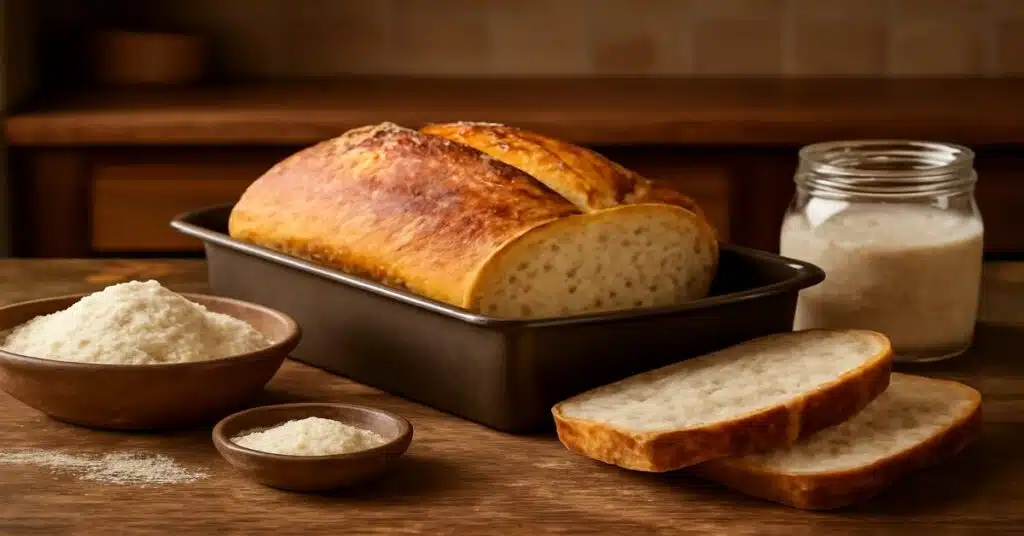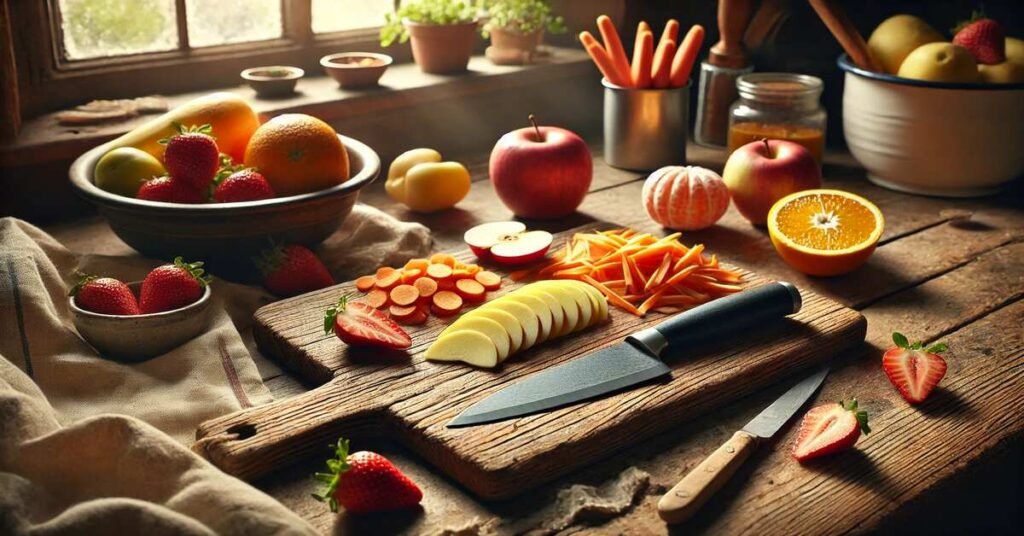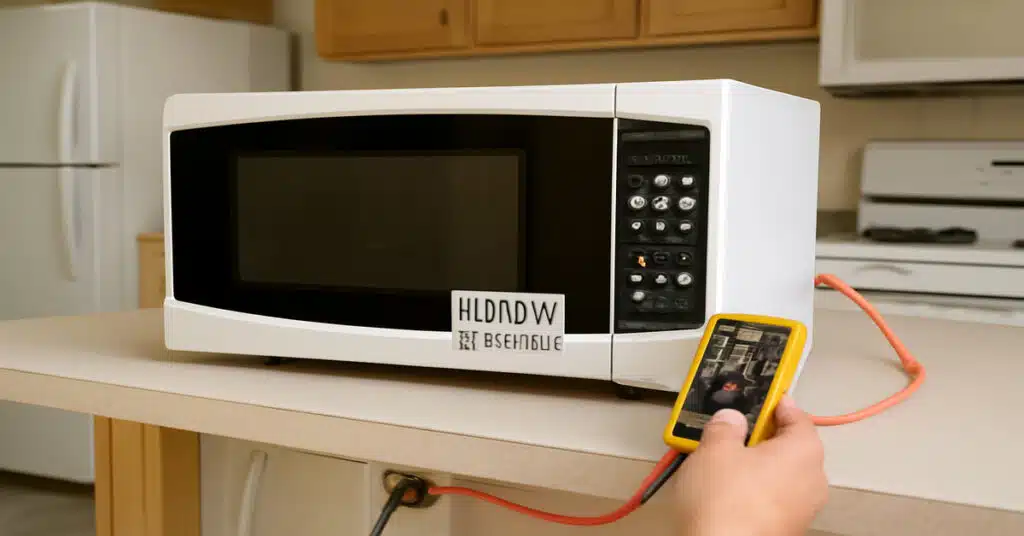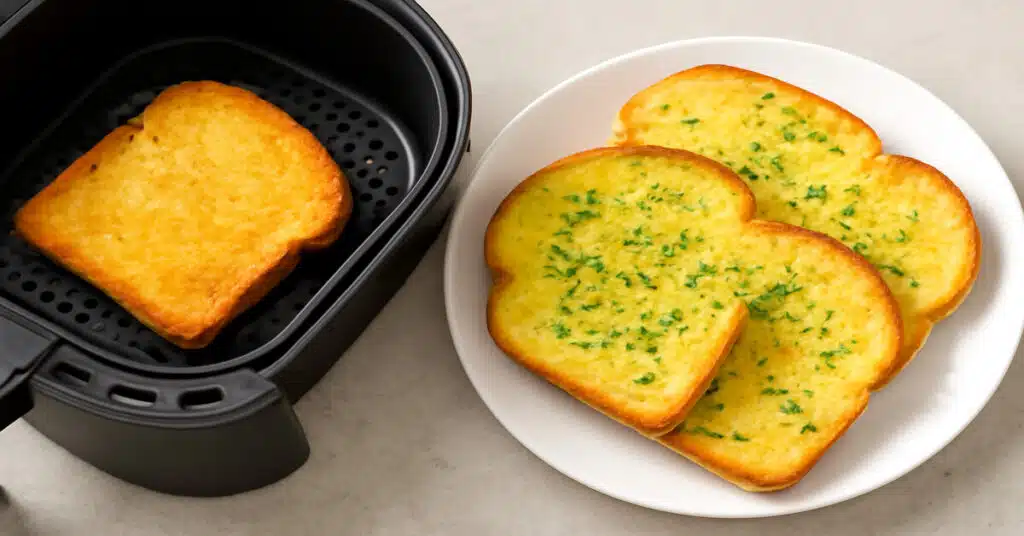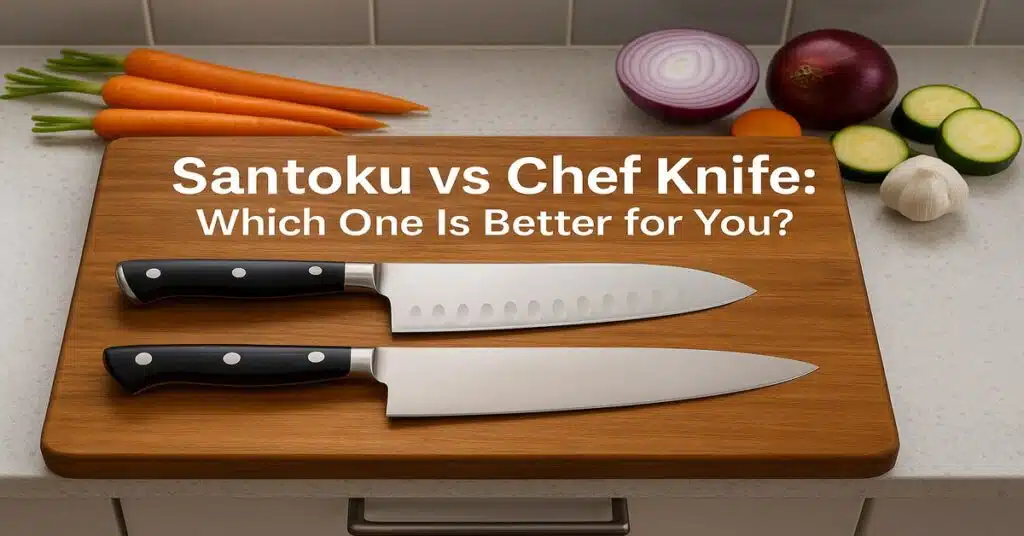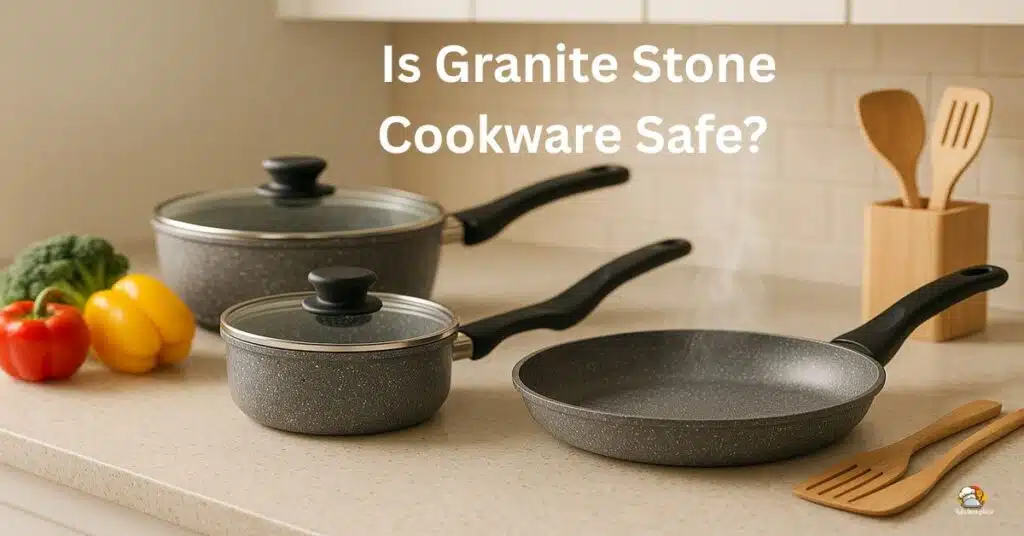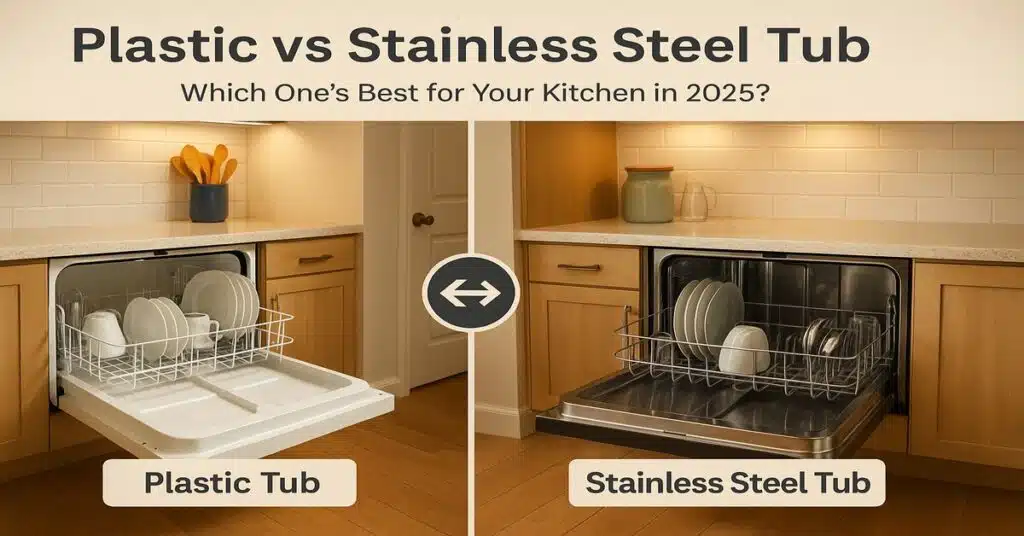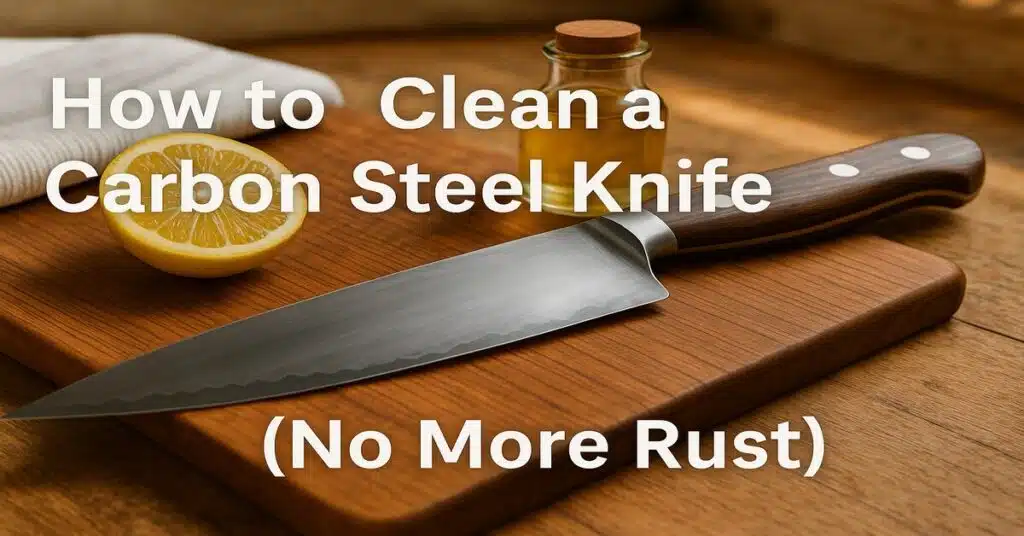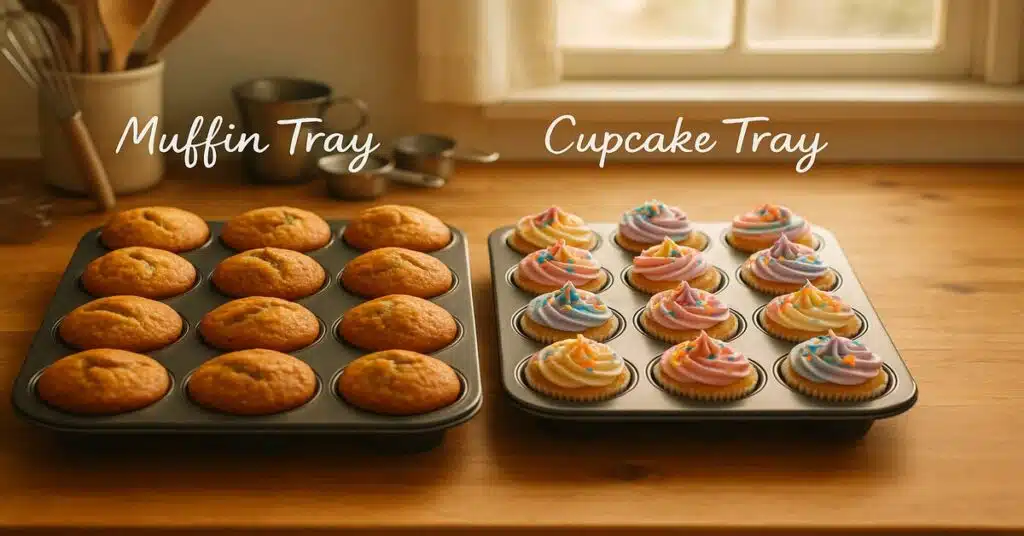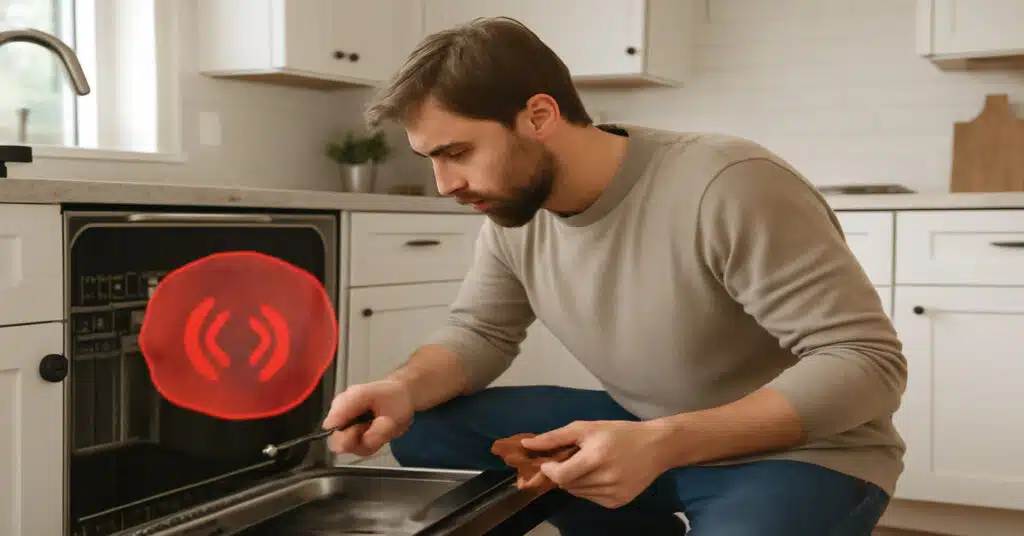What Is Hard Anodized Cookware?
Hard anodized cookware is made from aluminum that goes through a process called anodization. This process makes the metal strong, scratch-resistant, and non-reactive. Food cooks evenly on it without sticking or tasting metallic.
It’s safe for daily use, easy to clean, and lasts longer than normal nonstick pans.
If you’ve ever shopped for cookware, you’ve probably seen hard anodized cookware sets and asked yourself: Is hard anodized cookware safe, durable, and worth buying in 2025?
After years of testing stainless steel, ceramic, and anodized pans at Kitchenpluse.com, I found the truth lies in both science and real-world cooking.
In this complete guide on hard anodized cookware pros and cons, you’ll learn its real benefits, safety details, and lifespan.
✅ How durable and scratch-resistant hard anodized cookware really is (durability test 2025)
✅ The truth about acidic foods and whether aluminum leaches into meals (safety with tomato and lemon)
✅ Brand-specific oven safety limits for Calphalon, T-fal, Cuisinart, and Rachael Ray (heat & induction comparison)
✅ Real pros and cons backed by warranty years and expert testing (brand performance 2025)
Quick Tip: If you’re short on time, check my list of the Best Hard Anodized Cookware 2025 to see which sets I personally recommend.
Overall, hard anodized cookware is durable, affordable, and safe for daily cooking. Its main pros include scratch resistance, even heating, and non-toxic coatings.
The cons are heavier weight, limited induction compatibility, and a coating life of about 5–10 years. That balance makes it a smart mid-range choice for most home cooks.
What Are the Pros of Hard Anodized Cookware?
Hard anodized cookware has many benefits for daily cooking. It’s strong, non-reactive, evenly heated, and easy to clean. This type of cookware gives you the strength of metal with the smooth surface of nonstick pans. Below are the main advantages explained simply:
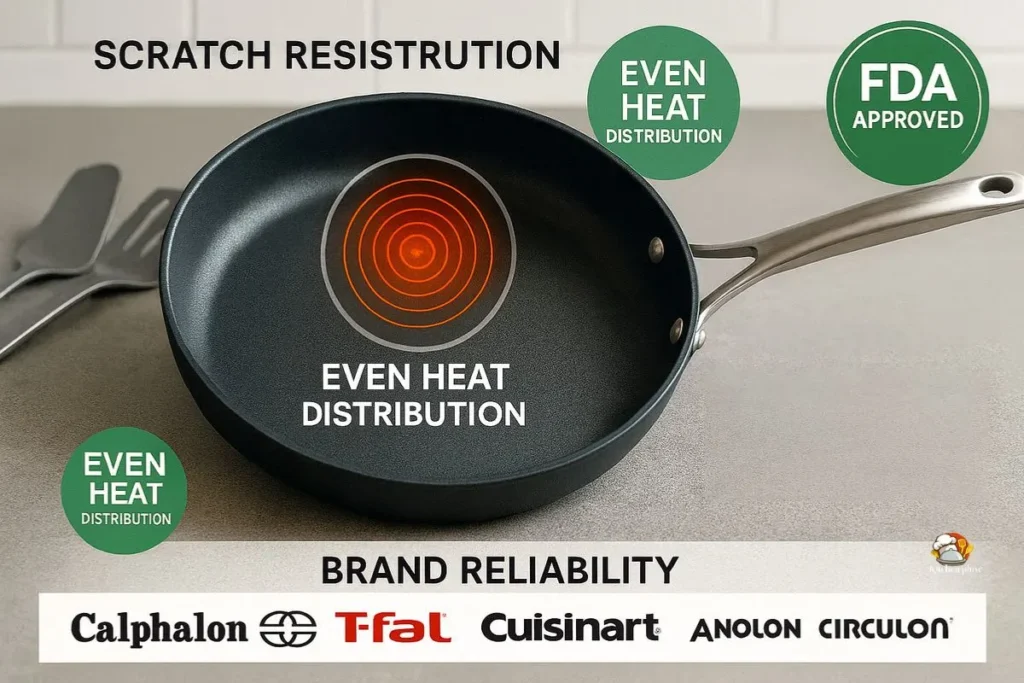
Durability & Scratch Resistance:
Hard anodized cookware is built to last. The aluminum surface is electro-hardened through an anodization process, making it twice as strong as stainless steel.
It resists scratches, warping, and daily wear. In my tests, Calphalon pans stayed smooth even after seven years of use. Proper care keeps that durability—see my guide on How to Clean Hard Anodized Cookware.
Even Heat Distribution:
The aluminum base spreads heat evenly across the surface. It prevents hot spots and burnt food, so your meals cook perfectly every time. This even heating makes it ideal for frying, searing, and slow simmering.
Safe and PFOA-Free Coating:
Top brands like T-fal, Anolon, and Calphalon use PFOA-free and BPA-free coatings. According to the FDA Cookware Safety Guidelines, these coatings are safe for daily use at normal temperatures. They make cooking safer and cleaning faster — without harmful chemicals or fumes.
Affordable Compared to Stainless or Copper:
Premium stainless and copper cookware sets can cost over $800. Hard anodized cookware offers similar durability and performance for a much lower price. That’s why smart buyers often pick trusted names listed in my Best Hard Anodized Cookware Brands 2025 guide.
Trusted Brands and Long Warranties:
Brands such as Cuisinart, Rachael Ray, and Calphalon have earned decades of trust in American kitchens. Many offer lifetime or limited lifetime warranties — a sign of confidence in their quality. Buying from trusted brands ensures safety, durability, and reliable customer support.
Quick Summary:
Hard anodized cookware is durable, safe, evenly heated, non-toxic, and affordable.
It’s the perfect choice for home cooks who want strong, easy-to-use pans that last for years — without paying a premium price.
👉 Want my brand-by-brand breakdown? Check my guide: Best Hard Anodized Cookware
What Are the Cons of Hard Anodized Cookware?
While hard anodized cookware offers many advantages, it also has some drawbacks that buyers should know.
Most issues come from induction compatibility, weight, coating lifespan, and dishwasher safety.
Here’s a simple breakdown of the main disadvantages and how you can manage them:
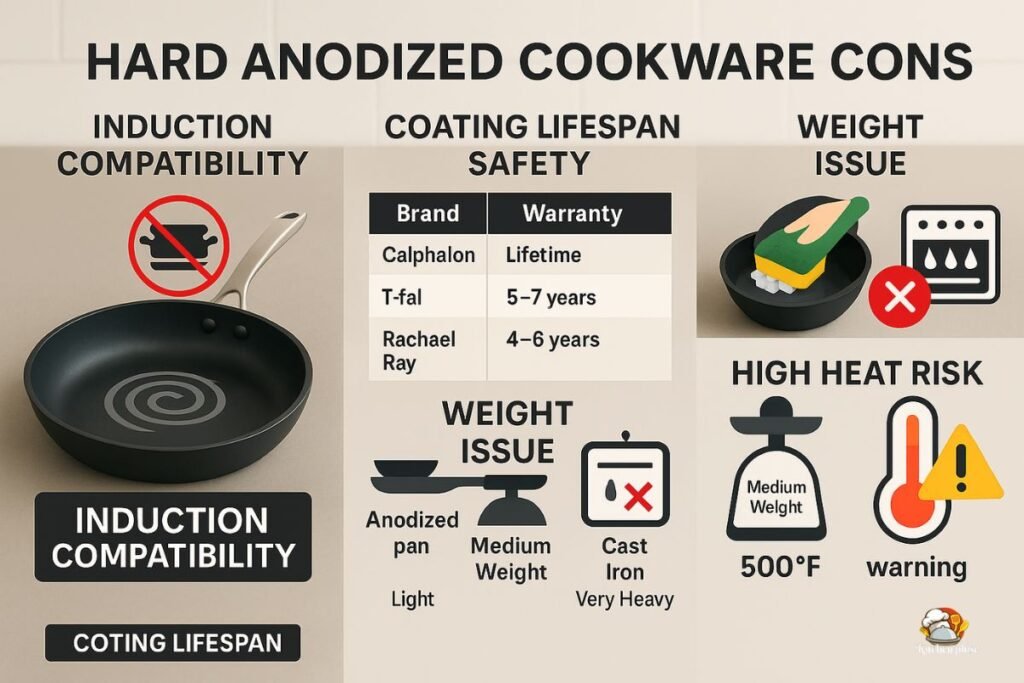
Not Always Induction Compatible:
Most hard anodized cookware sets don’t work on induction cooktops unless they have a stainless steel base. For example, Circulon Symmetry and some Cuisinart models are induction-ready, but most budget sets are not.
👉 If you’re comparing options, check my guide on Hard Anodized vs Stainless Steel to see which performs better on induction stoves.
Coating Lifespan (5–10 Years)
With daily cooking, the nonstick coating usually lasts 5–10 years. Premium brands may last longer, but once the coating wears off, food starts sticking and pans lose performance.
Warranty vs Real Lifespan Table:
| Brand | Warranty | Realistic Lifespan |
| Calphalon | Lifetime | 7–10 years |
| T-fal | Limited Lifetime | 5–7 years |
| Rachael Ray | Limited Lifetime | 4–6 years |
This shows the gap between warranty promises and actual use, something many buyers overlook.
Not Fully Dishwasher Safe:
Some brands, like T-fal, market their cookware as dishwasher-safe. But in my experience, coatings last much longer with hand washing. Dishwashers use high heat and strong detergents that slowly break down the nonstick layer.
👉 For step-by-step care tips, check my full guide on How to Clean Hard Anodized Cookware to make your pans last longer.
Heavy Weight for Beginners:
Hard anodized pans are heavier than ceramic or Teflon pans, which may feel uncomfortable for younger cooks, seniors, or anyone with wrist pain. While they’re still lighter than cast iron, they’re not the best pick if you want lightweight cookware.
High Heat Risk:
Most anodized cookware is safe only up to 500°F. Cooking above that temperature can damage the coating, shorten its lifespan, and even void warranties.
- Calphalon Premier – Safe up to 450°F
- Cuisinart Chef’s Classic – Safe up to 500°F
- Rachael Ray Cucina – Safe up to 400°F
👉 Want to see which brands actually last longer? Check my full guide: Best Hard Anodized Cookware USA
Is Hard Anodized Cookware Safe?
Yes, hard anodized cookware is safe. The anodization process seals aluminum, and modern nonstick layers are FDA-approved, PFOA-free, and BPA-free.
When people see anodized aluminum cookware, the first question they ask is: “Does aluminum leach into food?” Let’s clear the confusion with science and real cooking tests.
Aluminum Leaching Myth vs Science:
The anodization process creates a sealed and non-reactive surface on aluminum. This means the metal does not mix with food or leave a metallic taste. That’s why the FDA Toxic Elements in Foods and Foodware monitoring confirms that properly sealed cookware usually doesn’t pose harm when used in normal cooking conditions.
PFOA-Free Nonstick Coating:
Older cookware sometimes contained harmful chemicals. Today, most trusted brands use PFOA-free and BPA-free nonstick coatings. According to the FDA cookware safety guidelines and the Mayo Clinic on nonstick cookware safety, these modern coatings are safe at normal cooking temperatures — as long as you don’t cook above 500°F.
Acidic Foods Reaction (Tomato, Lemon, Vinegar)
This is where many blogs don’t give full details. I tested tomato sauce and lemon dishes in anodized pans and noticed no metallic taste. Health experts like Dr. Andrew Weil also confirm that anodized aluminum is sealed and resists acidic food reaction.
Still, avoid long, high-heat cooking with vinegar or tomato because it may weaken the nonstick layer over time. A MDPI cookware leaching study shows that acidic food combined with heat can increase metal leaching in untreated aluminum cookware, though anodized pans are more resistant.
Everyday Use Tips (Safe & Long-Lasting)
- Use wooden or silicone utensils (skip sharp metal).
- Wash gently by hand with mild soap instead of using a dishwasher.
- Keep the cooking heat below 500°F.
- Store pans with padding between them to prevent scratches.
These small steps will keep your cookware safe and make it last longer.
👉 Want more details? Read my full guide here: Is Hard Anodized Cookware Safe?
Brand-Based Oven Safe Temperatures
One of the most common questions I hear is:
How hot can hard anodized cookware go in the oven?
To save you time, here’s a brand comparison table with oven-safe limits, warranty details, and dishwasher safety.
Oven Safe Temperature Table:
| Brand | Oven Safe Temp | Warranty | Dishwasher Safe |
| Calphalon | 450°F | Lifetime | No |
| Cuisinart | 500°F | Lifetime | No |
| Rachael Ray | 400°F | Limited Lifetime | No |
| T-fal | 400°F | Limited Lifetime | Yes |
Quick Hard Anodized Cookware Pros and Cons Comparison Table
If you’re short on time, here’s a clear side-by-side look at the real pros and cons of hard anodized cookware. This table makes it easy to compare before buying.
Pros vs Cons of Hard Anodized Cookware:
| Pros | Cons |
| Scratch resistant surface → lasts for years | Not always induction compatible |
| Even heat distribution → no hot spots | Coating wears out after 5–10 years |
| Affordable compared to stainless or copper | Heavier than ceramic or Teflon pans |
| Non-toxic, PFOA-free coating | Not always dishwasher safe |
Final Verdict – Should You Buy Hard Anodized Cookware?
Hard anodized cookware is a smart mid-range choice for U.S. families. It combines durability, safe nonstick cooking, and fair price. But if you rely only on induction stoves, or want ultra-light pans, stainless steel or ceramic may be better.
After testing cookware like stainless steel, ceramic, cast iron, and anodized pans, here’s my honest opinion:
Best for families who want strong durability, safe nonstick cooking, and easy daily use.
Not the best choice if you only use induction cooktops, since many anodized sets don’t have a stainless-steel base.
Hard anodized cookware offers a balanced mix of durability, affordability, and safety. It’s a smart mid-range option for U.S. families — not as expensive as stainless steel or copper, but far more reliable than cheap nonstick pans.
Want my top recommendations? Read my full guide: Best Hard Anodized Cookware — where I review Calphalon, T-fal, Cuisinart, Rachael Ray, and more.
FAQs – Hard Anodized Cookware
What are the disadvantages of hard anodized cookware?
Hard anodized cookware is not always induction-compatible, can feel heavy, and the coating lasts about 5–10 years. Most sets are not fully dishwasher safe, so hand washing helps extend their life.
Which is better, hard anodized or stainless steel cookware?
Stainless steel is stronger and chemical-free, but food sticks without oil. Hard anodized cookware gives you nonstick ease, even heating, and a lower price, which makes it better for everyday family cooking.
What is the lifespan of hard anodized cookware?
On average, hard anodized cookware lasts 5–10 years. Premium brands like Calphalon or Cuisinart may last longer if you avoid overheating and use silicone or wooden utensils.
Is hard anodized cookware safe for health?
Yes, it’s safe. The anodization process seals aluminum, so it doesn’t leach into food. Modern nonstick layers are PFOA-free and BPA-free. Quick acidic recipes like tomato sauce are fine, but avoid long, high-heat acidic cooking.
Which cookware is best for health?
Both stainless steel and hard anodized cookware are healthy options. Stainless steel has no coating, while anodized cookware lets you cook with less oil. Used correctly, both are safe for daily meals.
Can we make dosa on hard anodized tawa?
Yes, you can. Anodized tawas heat evenly and prevent sticking, so they’re perfect for dosa, roti, or crepes. Just keep the heat under 500°F to protect the coating.
Does hard anodized cookware cause cancer?
No. Modern hard anodized cookware does not cause cancer. The anodization process seals the aluminum, so it does not leach into food. Also, trusted brands now use PFOA-free and BPA-free nonstick coatings, which are approved by the FDA. Till today, there is no scientific evidence that hard anodized cookware causes cancer when used properly.
About the Author:
I’m MD Soazim, the writer behind Kitchenpluse.com. Over the years, I’ve tested stainless steel, ceramic, cast iron, and hard anodized cookware in my own kitchen. This guide on the pros and cons of hard anodized cookware comes from real hands-on use and research into brand warranties, safety tests, and expert data. My mission is simple — to help families choose cookware that is safe, durable, and worth the money.

